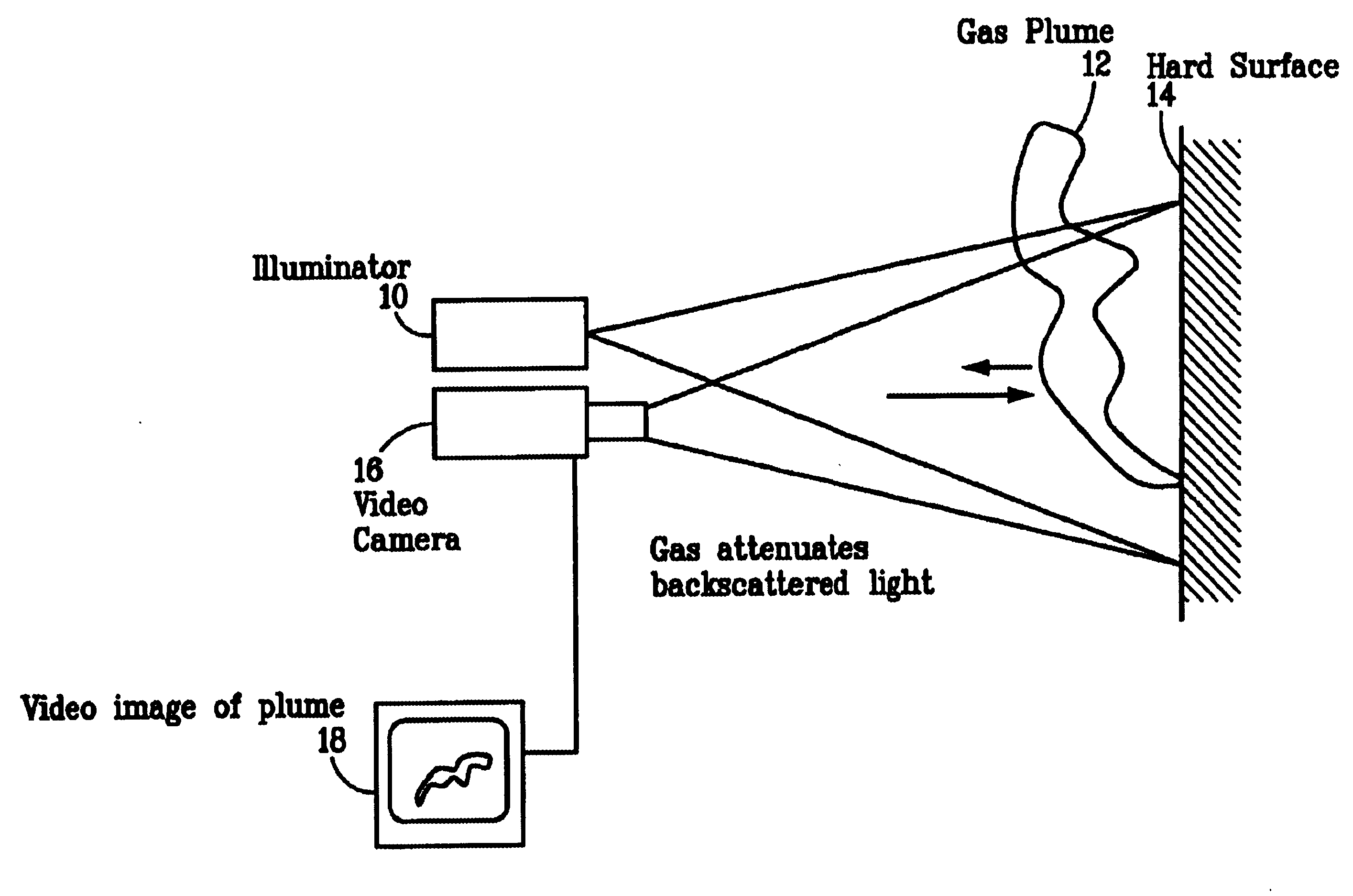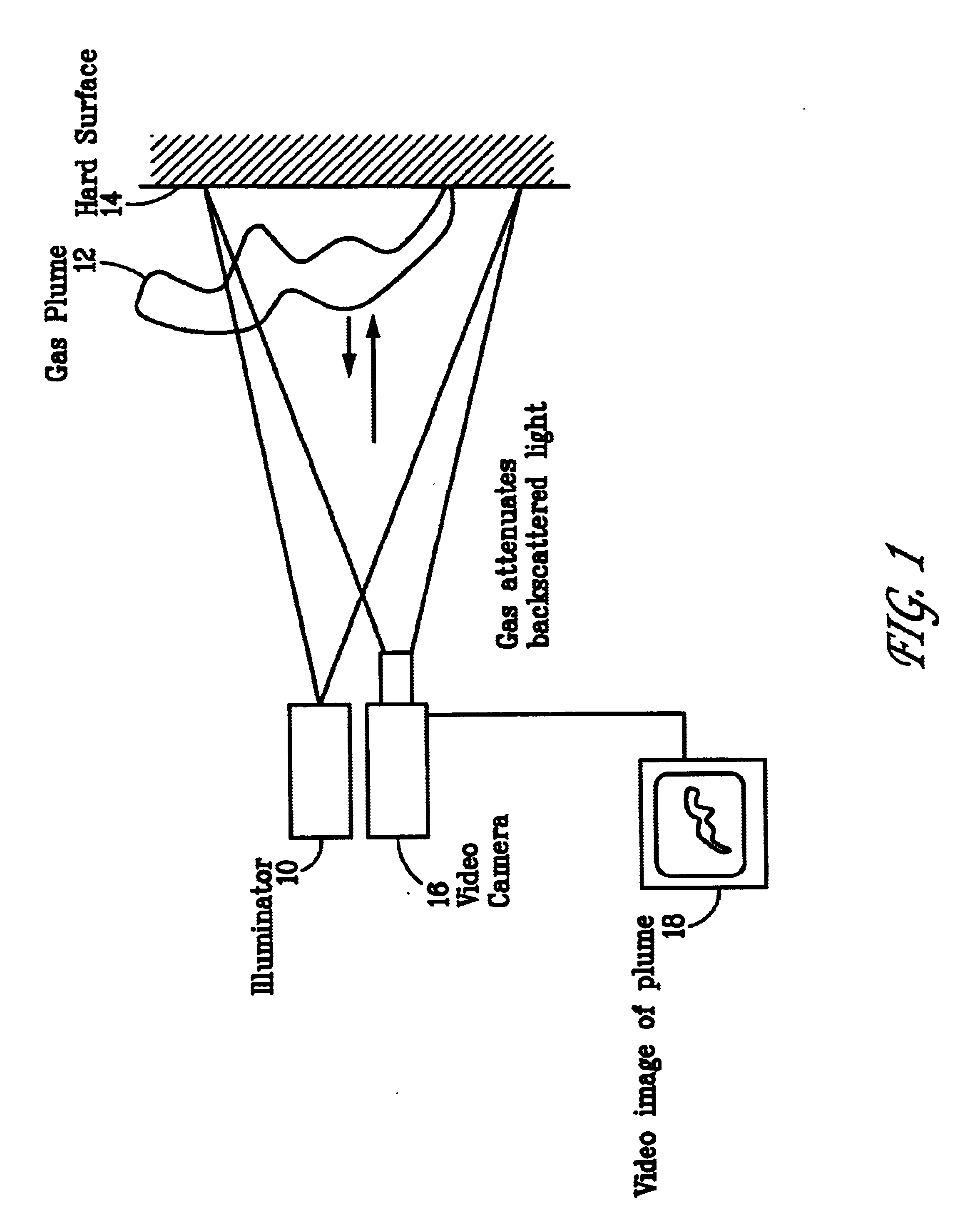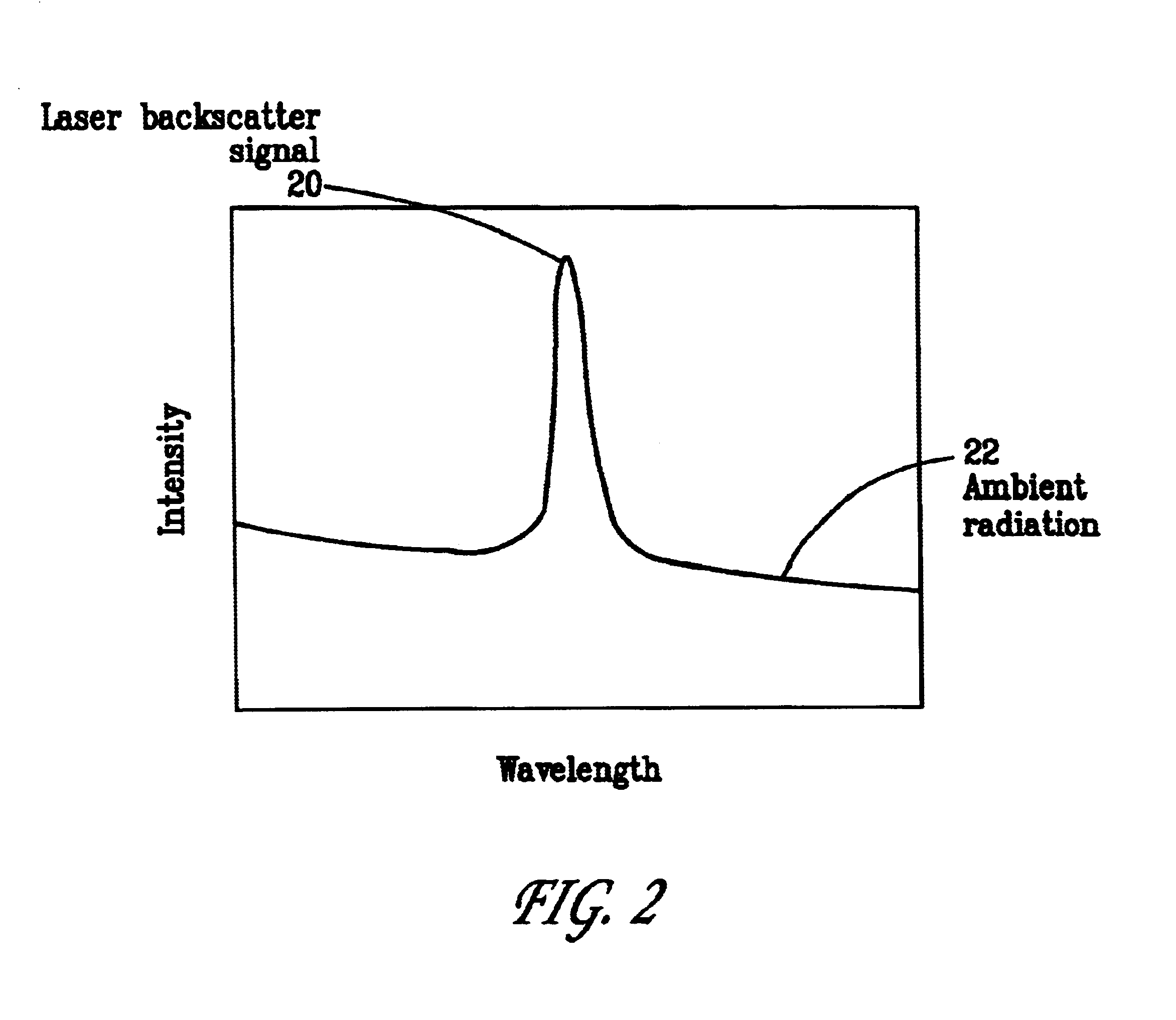Pulsed laser linescanner for a backscatter absorption gas imaging system
a gas imaging and laser liner technology, applied in optics, instruments, material analysis, etc., can solve the problems of not achieving the additional sensitivity provided by differential imaging, adversely affecting the way, and useful for single-wavelength imaging
- Summary
- Abstract
- Description
- Claims
- Application Information
AI Technical Summary
Benefits of technology
Problems solved by technology
Method used
Image
Examples
Embodiment Construction
and Satisfaction of Requirements
The present invention meets these requirements by using a linescanned approach in which the illumination source is a pulsed laser. The invention is capable of operating in either single-wavelength or differential mode. FIG. 3 depicts the general notion of a linescanned pulsed imager. Linescanner 30 directs a sheet of laser illumination 32. A linear or two-dimensional detector array instantaneous field of view 34 is used to image one or more lines on the target scene (FIG. 3). A pulsed laser provides a linear illumination pattern that is formatted to illuminate one or more of the viewed lines on the target scene. Thus, the laser line(s) overlap with the instantaneous field-of-view (IFOV) of the linear detector array at the target. To form an image, the intersection zone of the detector IFOV and the laser line is swept up and down the target by one or more mechanically-scanned mirrors, or by an electro-optic or acousto-optic deflection mechanism. As sho...
PUM
| Property | Measurement | Unit |
|---|---|---|
| wavelength range | aaaaa | aaaaa |
| wavelength | aaaaa | aaaaa |
| threshold | aaaaa | aaaaa |
Abstract
Description
Claims
Application Information
 Login to View More
Login to View More - R&D
- Intellectual Property
- Life Sciences
- Materials
- Tech Scout
- Unparalleled Data Quality
- Higher Quality Content
- 60% Fewer Hallucinations
Browse by: Latest US Patents, China's latest patents, Technical Efficacy Thesaurus, Application Domain, Technology Topic, Popular Technical Reports.
© 2025 PatSnap. All rights reserved.Legal|Privacy policy|Modern Slavery Act Transparency Statement|Sitemap|About US| Contact US: help@patsnap.com



